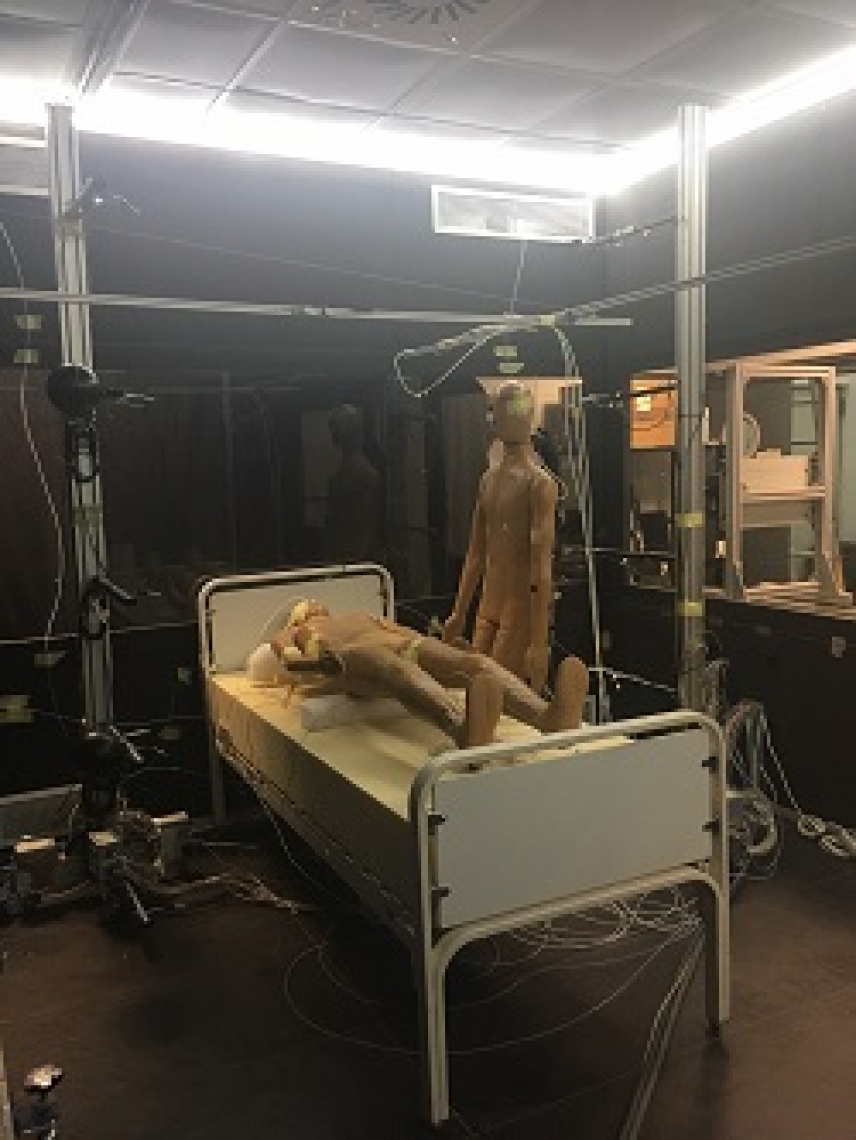
A number of pathogens may be transmitted through airborne saliva particles expelled when we cough, speak or breathe. These particles remain suspended in the air, and any pathogens they might contain can be inhaled by other people, giving rise to infection. These so-called ‘droplet nuclei’, with a diameter of less than 5 microns (i.e. 0.005 millimetres) are being studied by an UCO research group led by Professor Manuel Ruiz de Adana, in collaboration with the University of Valladolid School of Industrial Engineering and the University of Aalborg in Denmark. Their findings, published recently in Energy and Buildings, suggest that hospital infection rates can be reduced by implementing appropriate ventilation systems, and by including air-renewal systems in the design of new hospitals.
As Professor Manuel Ruiz explains, the aim is to reduce the risk of cross-infection between two people, “especially in hospital isolation rooms, where patients are at the greatest risk”. The systems studied within the framework of the TRACER research project include displacement ventilation systems, which supply conditioned air at a low velocity; “that air acts as a piston, pushing the used air upwards from near floor level and continuously extracting it near ceiling height”. The UCO team, which is running the TRACER project, has focussed specifically on systems of this kind.
However, these systems are not widely installed in hospitals, which tend to use the standard mixing ventilation, in which air is supplied to the room with a view to diluting contaminants.
According to data provided by Professor Ruiz, current regulations governing hospital design require that the air in isolation rooms should be renewed 12 times an hour. Using the displacement ventilation system recommended by his research team, the optimal number could be reduced to 9, since there is less risk of cross-infection between people.
For study purposes, the team built a simulated hospital isolation room equipped with thermal manikins in the air-conditioning research laboratory at the Rabanales Campus; numerous airflow patterns were tested to simulate a range of ventilation systems. As a result, the team was able to study the risk of airborne cross-infection in hospital environments as a function of the ventilation system, local conditions in the isolation room and the hourly frequency of air renewal.
The study published in Energy and Buildings is part of broader research into airflow patterns; this research, which began in 2014, seeks among other things to draw up a design guide for engineers working with ventilation systems in hospital premises.
The Tracer research project DPI2014-55357-C2-2-R, “Influence of ventilation systems on the airborne dispersal of exhaled bioaerosols. Assessing the risk of cross-infection”, is part of the 2013-2016 State Plan for Scientific and Technical Research and Innovation (MINECO) and the 2014 State Programme for Research, Development and Innovation to meet the Challenges of Society.
F. A. Berlanga, M. Ruiz de Adana, I. Olmedo, J. M. Villafruela, J. F. San José, F. Castro, Experimental evaluation of thermal comfort, ventilation performance indices and exposure to airborne contaminant in an Airborne Infection Isolation Room equipped with a displacement air distribution system, Energy and Buildings. https://doi.org/10.1016/j.enbuild.2017.09.100


